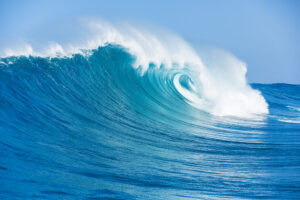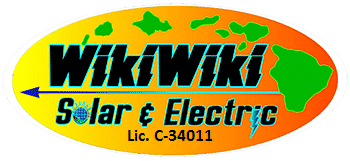Surfing the Next Wave of Clean Energy Innovation

Here in Hawaii, we certainly have a healthy appreciation and gratitude for the ocean. From food and culture to recreation and enjoyment, so much of our lives are connected to its astounding power and abundance of resources each and every day. But did you know that the ocean also represents one of the most-promising frontiers on the clean energy frontier? Oceans cover more than 70% of the Earth’s surface, representing a prime space for exploring new and renewable energy technology for the coming years. With nearly 40% of the world’s population living within 60 miles of the ocean, that’s a whole lot of potential to be explored – and the Aloha State could be primed to capitalize, seeing as we are surrounded by it!
How does energy come from the ocean?
So how can researchers take the awesome power of the ocean and convert it into usable energy? A wave-energy converter, or WEC, is needed in order to translate the power generated by ocean swells into energy that can be utilized. WECs come in a variety of configurations and can be extremely complex to understand: this video gives an excellent primer on one of the recent prototypes currently being researched for wider usage and adoption. Simply put, WECs are designed to capture the energy transfer of rolling waves by transporting them through a converter in the water, which then processes the transferred movement into energy.
It’s also important to note that there are two potential types of energy contained in our oceans: mechanical energy, or the potential energy that emanates from the tides and waves which we discussed above, and thermal energy, or energy produced as a result of the sun’s heat upon the ocean. Thermal energy is an important part of hydropower, or the process by which thermal energy is utilized as power. Did you know that Hawaii is home to the world’s leading test facility for ocean thermal energy conversion technology? The National Laboratory of Hawaii Authority was established in 1974 and has been supplying electricity to the local Big Island Kona grid since 2015!
What are the current barriers to widespread adoption?
As it stands, advancing the technology of most WEC prototypes remains the biggest hurdle to navigate on the path towards utilizing our ocean currents and waves for powering clean energy. Although research into wave technology actually dates back centuries, developing cost-effective structures with which to commercialize and grow the adaptation of wave energy technology remains in its infancy, and further research will be needed in order to create viable pathways towards sustainable usage. Currently, it’s forecasted that ocean energy from both thermal and mechanical energy could comprise up to 10% of our global energy needs by the year 2050, which would represent a massive achievement in the ongoing fight to break the addiction to harmful, carbon-based fossil fuels and energy resources.
